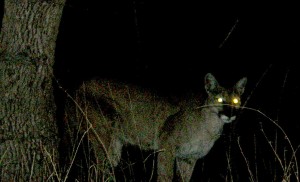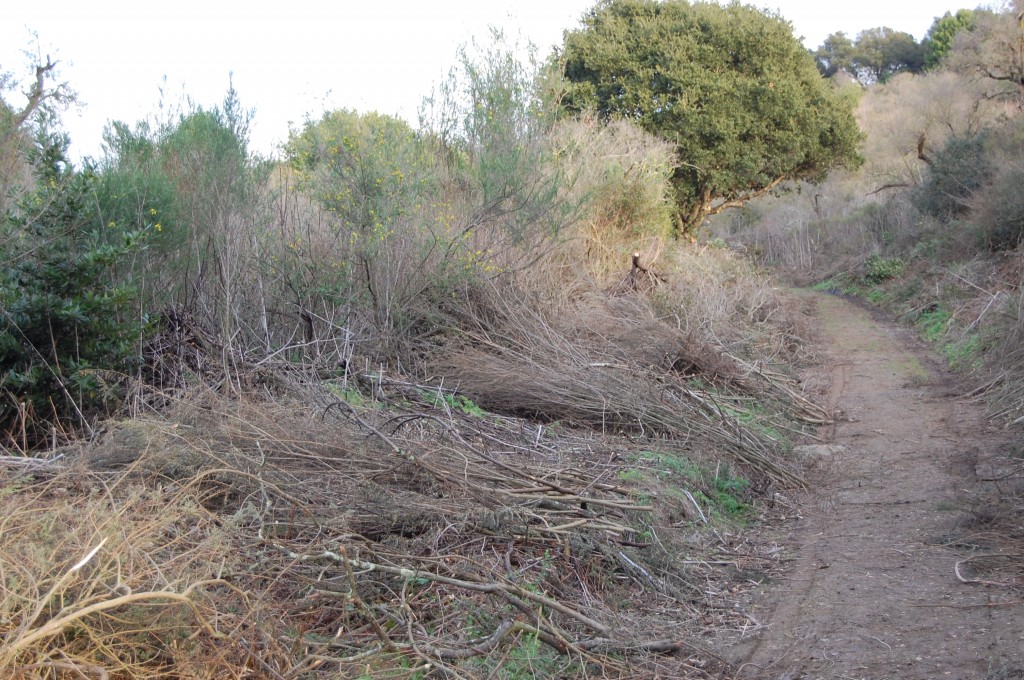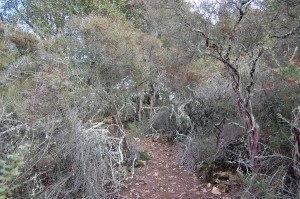As we were finishing up the post on mountain lions last week, the story broke that Dan Richards, President of the California Fish and Game Commission, had killed a mountain lion in Idaho on an arranged hunt. After a long chase led by hunting dogs, he shot the exhausted animal out of a tree where it had climbed to escape the dogs. Later that night Richards dined on his kill and gloated about it in a letter to a California state lawmaker. Not so surprisingly, public outrage has erupted and there have been calls for his resignation since the Commission is involved with protecting California’s wildlife. But Richards’ defenders point out that hunting mountain lions is legal in Idaho.
About Laura
Laura Baker is an environmental activist and former conservation chair of the East Bay Chapter of the California Native Plant Society. She holds an MA in ecology and systematic biology. Growing up in Missouri, she learned early that the cure for most ills rests in spending time out in nature. She wishes for every child to have the experience of wholeness that nature provides. Laura's Knowlander blog is dedicated to building an online library of the natural history of Knowland Park so that the public may enjoy the park for the natural heritage treasure that it is. Knowing the land is a never ending process of inquiry open to all. We welcome your comments, contributions, and photos.Mountain Lions in the East Bay Hills: Why Conservationists Should Care About Knowland Park
Living with Lions in the Urban Wildland Interface
From the point of view of a mountain lion, Knowland canyon sits at a key crossroads: to the north and south are the East Bay Regional Park District’s ridgeline parks extending in a nearly unbroken 25-mile chain from El Sobrante south to San Leandro. To the east is San Leandro Reservoir and to the west is Knowland Park. These north-south and east-west axes afford mountain lions critical migratory corridors of sufficient size to accommodate portions of their large home ranges.
Oakland Cheats the Environment Again at Knowland Park
Crews were out this past week cutting trees and shrubs in 15-foot swaths on either side of the fire roads leading into the park, creating habitat loss and the further invasion of weeds like french broom, poison hemlock, and thistles. (The accompanying photo shows native coastal scrub. The remaining yellow-flowering shrub on the left is french broom.) Assistant Fire Marshal Leroy Griffin stated that the work was necessary to maintain emergency access for fire engines.
Coast Silk-tassel
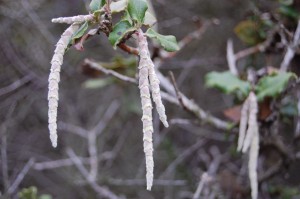 Perhaps the most dramatic of the winter-blooming shrubs found in the Knowland Park chaparral is the coast silk-tassel. As its name suggest, long elegant tassels dangle from the branches, bedecking the plant in soft gray-green catkins. The species is dioecious–there are both male and female plants-and the catkins on the male plants are longer than on the female.
Perhaps the most dramatic of the winter-blooming shrubs found in the Knowland Park chaparral is the coast silk-tassel. As its name suggest, long elegant tassels dangle from the branches, bedecking the plant in soft gray-green catkins. The species is dioecious–there are both male and female plants-and the catkins on the male plants are longer than on the female.
Pollen from the small inconspicuous flowers on the male catkins is wind-blown onto the female flowers. Once pollinated, the flowers develop into a chain of berries which provide food for birds and mammals.
The Rare Chaparral Plant Community of Knowland Park
There are several different types of native shrub communities in Knowland Park, but none is as rare or fascinating as the remnant stand of maritime chaparral located on the northwestern side of the park. Chaparral is a quintessential California vegetation, and winter is an excellent time of year to explore the chaparral at Knowland Park. As you follow the path into brush, you’ll find yourself in a maze-like realm of twisted, lichen-encrusted trunks and unique plant life. Truly wondrous!
This post is the first in a series focusing on some of the native shrubs found there.
Save Oakland’s Oaks
Expansion Controversy
Search Our SIte
Blog Categories
Regular Bloggers
 Ruth Malone |
 Laura Baker |
 Jim Hanson |
 Mack Casterman |
We support Oakland's public spaces!
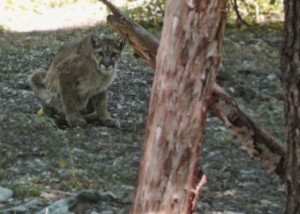
 Follow
Follow